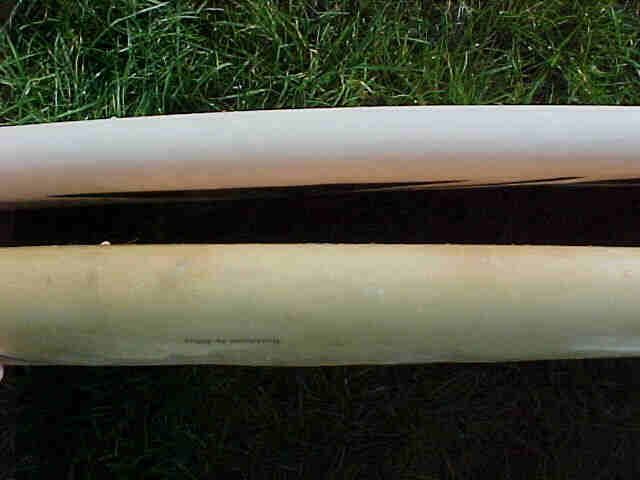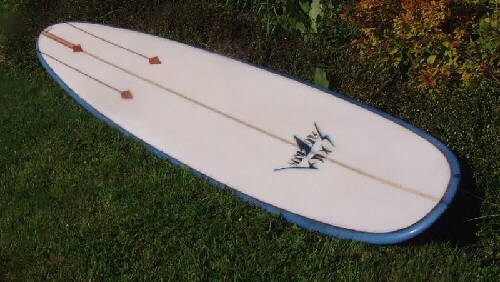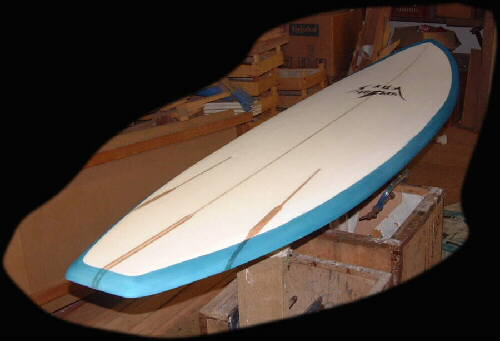
Choosing a Surfboard.
If you are a first time buyer, you should definitely ask for advice before buying a surfboard. Here are some general guidelines as to what sort of board you should think about buying. There is no right or wrong choice, it is a question of better or worse, and peoples opinions of a good choice can be different. I prefer riding a shortboard but I think that longboards are great and I can now hang 5, I have no biased opinion, on the subject of surfboards. These are my guidelines for a good beginners board, they should be pretty good, but they won't be prefect.
Its difficult to know where to start as there are so many factors which affect a good beginners surfboard, but I feel that the most important thing to look out for, is the buoyancy of the board (how floaty it is!). The board has to be quite thick, around 2.3/4" to 3 inches to provide enough buoyancy to float you quite high on the water. Also the length affects the buoyancy. The general rule is "the longer the better" however longboards can be hard to handle if you are quite small, so a rough guide is that it should be at least a foot longer than you.
This brings me onto my next point. When a shaper starts a board he/she takes the weight of the rider into consideration, because a heavy person on a small board won't float well, so if you are a big person, a bigger board is probably a better idea.
If you are like me, and do quite a bit of skateboarding then possibly your surfing will progress quite quickly, and you will soon be wanting to try your skateboard tricks on the surfboard (much harder!) so a shortboard (6` - 6`6") is probably a good choice for you, but I say again, check that it is quite buoyant. The reason buoyancy is needed is that it generally helps increase the paddling speed of the board (obviously other factors affect it as well), and if it paddles quickly, waves are easier to catch, so you get more waves, and your learning curve becomes steeper. Also a buoyant board is generally more stable.

The above photo shows the difference in thickness of two boards, the thin one is slower to paddle than the thicker board and is also less stable and is harder to stand up on.
The general shapes to look out for when buying a surfboard as a beginner to the sport are:
1) Mals - If you have no previous board riding experience (e.g. skating, snowboarding etc.) and are of quite big build.

2) Mini Mal - If you have no previous board riding experience and are of medium build/weight.

3) Funboard - If you think you'll progress quickly and are quite light.

4) The Fish Surfboard - If you skate, snowboard etc. and you are of medium/small build then this may be the board for you to learn on.

A typical board to avoid is a 6`4" x 18" x 2" 1/4. It is narrow, thin, quite short, and generally hard to learn on.
So overall, in my experience, a buoyant surfboard is best for learning on.
Also after my trip to Cornwall, I think that if you have no previous surfing experience but you want to learn, go to a good surf school as they get you up standing very quickly and you`ll enjoy your experience much more than if you just hire a board and enter the waves without help.